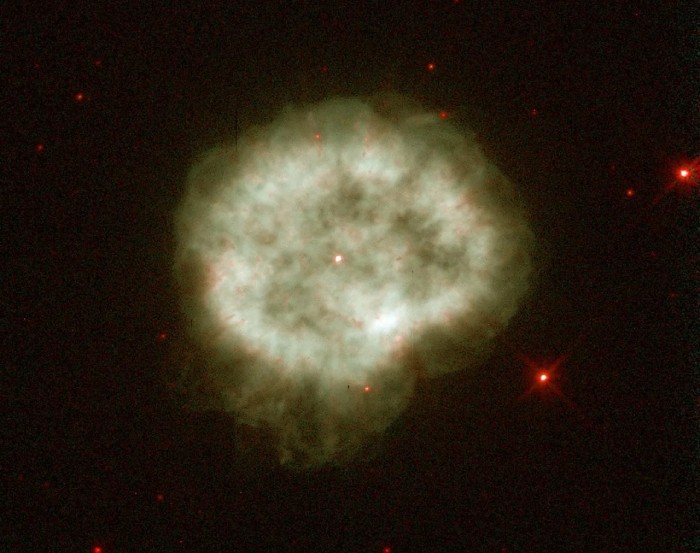NGC 2867 is a striking planetary nebula located in the southern constellation of Carina, known for its rich star fields and deep-sky objects. The nebula lies at a distance of approximately 5,000 to 8,000 light-years from Earth, placing it within the galactic plane of our Milky Way. The nebula was first discovered by the English astronomer John Herschel in 1835 during his prolific observational campaign from South Africa, where he meticulously catalogued numerous southern hemisphere objects.
Physical Characteristics
At the heart of NGC 2867 lies a white dwarf, a small but incredibly hot remnant of the original star that has exhausted its nuclear fuel. The white dwarf’s intense ultraviolet radiation illuminates and excites the surrounding gas, creating the vibrant nebula we observe today. The nebula’s spherical shape, adorned with intricate filamentary structures, gives it a characteristic appearance that has often been described as resembling a “planetary disk” or even a “diamond ring” due to its bright central region and outer halo.
The nebula’s reddish hue is a result of the emission lines of ionized hydrogen (H-alpha) and nitrogen atoms, which are excited by the high-energy radiation from the central star. This specific colour profile is common in many planetary nebulae and provides crucial information about the nebula’s chemical composition and the nature of the central star’s emissions. The structural complexity of NGC 2867, with its bright core and surrounding gas clouds, suggests dynamic processes that have shaped the material ejected by the dying star.
Evolutionary Stage
NGC 2867 is in a relatively late stage of stellar evolution, representing the fate of stars with masses similar to our Sun. The original star, after going through the red giant phase, shed its outer layers into space in a series of powerful stellar winds. This process exposed the star’s hot core, which is now visible as a white dwarf. Over time, this remnant will continue to cool and fade, while the surrounding nebula will gradually disperse into space. Planetary nebulae like NGC 2867 are important to study because they provide a glimpse into the future of our Sun, which is expected to undergo a similar transformation in about 5 billion years.
In addition to their aesthetic beauty, planetary nebulae play a critical role in enriching the interstellar medium with heavier elements. The gas ejected from stars during the planetary nebula phase contains elements like carbon, nitrogen, and oxygen, which are then incorporated into new stars and planets. This recycling of material is essential for the ongoing chemical evolution of the galaxy.
Observation
NGC 2867 has an apparent magnitude of 10.0, which makes it a moderately faint object. Observing it requires a medium-sized telescope under dark sky conditions, where light pollution is minimal. Although small telescopes or large binoculars with 80mm apertures can help you locate the nebula, resolving its detailed features may require an instrument with a larger aperture. Observers in the Southern Hemisphere have the best opportunity to view NGC 2867, particularly during the months of December to May, when the constellation Carina is high in the sky.
For amateur astronomers, one of the keys to observing faint nebulae like NGC 2867 is to allow your eyes time to adapt to the darkness. This process, known as “dark adaptation,” can take 20 to 30 minutes and significantly enhances the visibility of faint objects. Observing from a site far from city lights further improves contrast, allowing the nebula’s intricate details to emerge more clearly against the background sky.




